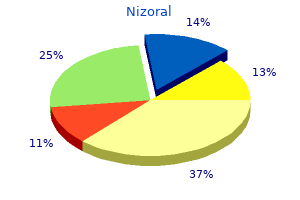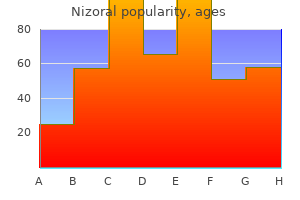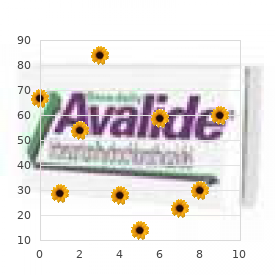Nizoral
"Discount 200mg nizoral with visa, antifungal means".
By: K. Ketil, M.B. B.CH. B.A.O., Ph.D.
Clinical Director, Louisiana State University School of Medicine in Shreveport
Other characteristics often associated with autism are engagement in repetitive activities and stereotyped movements anti fungal uti purchase nizoral 200 mg overnight delivery, resistance to environmental change or change in daily routines fungus cure buy nizoral with a mastercard, and unusual responses to sensory experiences fungus gnats pot plants generic 200mg nizoral fast delivery. Students with severe autism may be nonverbal and often have mental retardation as a co-existing condition while students with milder symptoms may have some social skills deficits and a limited range of interests fungus gnats in my house generic 200mg nizoral overnight delivery. Some students with autism may be included in general education transportation while others may require specialized services. Behaviors that may be evident in students who are autistic include: · Indifference to other people - Students with autism sometimes treat other people as if they were objects and just in the way. They may bump into you as if you were a piece of furniture, without excusing themselves or noticing they bumped into another person. For example, some students have trouble with pronouns and may use "you" instead of "I" when speaking. Some students tend to repeat what they hear instead of responding in a more typical way. They are easily upset and anxious about changes other students may not even notice, such as if a different type of bus picks them up, if they are in the window seat instead of the aisle seat, or if they are sitting next to someone new. They are often very sensitive to changes in temperature, loud noises, or physical touch, and may have a panic reaction at times to some of these changes. They may also be fascinated by various kinds of movements, for example, becoming completely absorbed by a spinning wheel or fan. When working with students who are autistic, remember these students are affected by a disorder; their conduct is not necessarily willful. These students need sameness, calmness, structure, and firmness along with gentleness, and patience. Parents may be able to help you determine what medium will provide a calming effect during the bus ride. If available, you should work with a mobility specialist and the student to determine the best methods for assistance (sighted guide techniques, etc. Drivers should learn signals for help, distress, toileting needs, illness, hunger, and any other daily events that may occur on a bus as these signals are the only means by which the student can communicate. Consider seating students who are deaf and blind close to the bus door for ease of exit/entry and to avoid objects or people who may block movement in the aisle. Also, avoid seat reassignment for behavior management to ensure a consistent orientation route from the stairwell to their seat. Students who are deaf are taught and communicate through their other senses and therefore rely on visual and tactile information. To communicate, the student often learns to respond to lip movement, facial expression, signs, and/or finger spelling. When reading lips, students may not understand all of what is said, so repetition may be necessary. Remember to look directly at the student, maintain eye contact, and speak clearly, naturally and slowly; shouting is useless. The inclusion of students with emotional disturbance in general education transportation is fairly common. These students may act in ways that are inappropriate, either in their nature or in their timing or degree. Since many have unusual difficulties maintaining interpersonal relationships, they can be aggressive, withdrawn, anxious, or easily frustrated. They may be loud, excitable, defiant and aggressive, particularly when confronted by adults setting rules, such as bus drivers. Behavior may include destroying property, starting fights, and using offensive or inappropriate language. On the other end of the spectrum, some students who are emotionally disturbed have a pervasive mood of unhappiness or depression, and do not cope well with stress. They may be excessively shy and withdrawn, and avoid contact with their peers and adults alike.


Psychological disorder is often accompanied by faulty reality monitoring antifungal yeast infection medication generic nizoral 200mg otc, distorted perception antifungal soap for ringworm cheap nizoral generic, impaired judgment fungus zygomycosis cheap nizoral express, anxiety kingdom fungi definition and examples order nizoral 200mg visa, mood disturbance, poor self-control, and feelings of guilt. Gudjonsson (2003) provided a number of examples of cases where false confessions were directly related to specific disorders. Following the release of the Birmingham Six in 1991, research conducted for the British Royal Commission on Criminal Justice found that about 7% of suspects detained at police stations had a 123 Law Hum Behav history of mental illness and that many more were in an abnormal mental state due to anxiety and mood disturbance (Gudjonsson, Clare, Rutter, & Pearse, 1993). Similar findings were found in a recent study among suspects at Icelandic police stations (Sigurdsson, Gudjonsson, Einarsson, & Gudjonsson, 2006). To further compound the problem, the majority (7580%) of offenders with mental illness have co-occurring substance abuse or dependence disorders (Abram, Teplin, & McClelland, 2003), which is an additional risk factor for false confessions (see Sigurdsson & Gudjonsson, 2001). However, there is recent evidence from two separate studies to suggest that depressed mood is linked to a susceptibility to provide false confession to police (Gudjonsson et al. Finally, Redlich (2007) found that offenders with mental illness self-reported a 22% lifetime false confession rate-notably higher than the 12% found in samples of prison inmates without mental illness (Sigurdsson & Gudjonsson, 1996). Protections for Vulnerable Suspects in England When the police interview mentally disordered persons and juveniles in England and Wales, there are special legal provisions available to ensure that their statements to police are reliable and properly obtained-for example, in the presence of ``appropriate adults. Even when the police adhere to all the legal provisions, a judge may consider it unsafe and unfair to allow the statement to go before the jury. Here the crucial issue may be whether or not the defendant was ``mentally fit' when interviewed. The term ``fitness for interview' was first introduced formally in the current Codes of Practice, which became effective in 2003. Historically, legal competence constructs relating to confession evidence have focused primarily on the functional deficits of juveniles (Drizin & Colgan, 2004), and adult defendants with mental retardation (Fulero & Everington, 2004) and mental illnesses (Melton, Petrila, Poythress, & Slobogin, 1997). Increasingly, the construct of legal competence in criminal cases is also being applied to defendants with ``personality disorder' (Gudjonsson & Grisso, 2008). The introduction of ``fitness to be interviewed' within the current Codes of Practice in England and Wales is a significant step toward protecting vulnerable suspect populations (Gudjonsson, 2005). Indeed, a similar framework has been introduced in New Zealand and Australia (Gall & Freckelton, 1999). Innocence as a Risk Factor On September 20, 2006, Jeffrey Mark Deskovic was released from a maximum-security prison in New York, where he spent 15 years for a murder he said he committed but did not. On the basis of anecdotal and research evidence, Kassin (2005) suggested the ironic hypothesis that innocence itself may put innocents at risk. Specifically, it appears that people who stand falsely accused tend to believe that truth and justice will prevail and that their innocence will become transparent to investigators, juries, and others. As a result, they cooperate fully with police, often failing to 123 Law Hum Behav realize that they are suspects not witnesses, by waiving their rights to silence and a lawyer and speaking freely to defend themselves. Thus, although mock criminals vary their disclosures according to whether the interrogator seems informed about the evidence, innocents are uniformly forthcoming-regardless of how informed the Ё interrogator seems (Hartwig, Granhag, Stromwall, & Ё Kronkvist, 2006; Hartwig, Granhag, Stromwall, & Vrij, 2005). Based on observations of live and videotaped interrogations, Leo (1996b) found that four out of five suspects waive their rights and submit to questioning-and that people who have no prior record of crime are the most likely to do so. In light of known recidivism rates, this result suggested that innocent people in particular are at risk to waive their rights. Kassin and Norwick (2004) tested this hypothesis in a controlled laboratory setting in which some subjects but not others committed a mock theft of $100. Upon questioning, subjects who were innocent were more likely to sign a waiver than those who were guilty, 81 to 36%. Afterward, most innocent subjects said that they waived their rights precisely because they were innocent: ``I did nothing wrong,' ``I had nothing to hide. It may also stem from the ``illusion of transparency,' a tendency for people to overestimate the extent to which their true thoughts, emotions, and other inner states can be seen by others (Gilovich, Savitsky, & Medvec, 1998; Miller & McFarland, 1987). Whatever the mechanism, it is clear that Miranda warnings may not adequately protect the citizens who need it most-those accused of crimes they did not commit (Kassin, 2005). Ё these findings suggest that people have a naive faith in the power of innocence to set them free. This phenomenology was evident in the classic case of Peter Reilly, an 18-year-old who falsely confessed to the murder of his mother. In 1985, based solely on eyewitness identifications, Bloodsworth was convicted for the rape and murder of a 9-year-old girl. The day of his arrest, Bloodsworth was warned that there would be cameras present and asked if he wanted to cover his head with a blanket.

Direct-care worker touching the sex organs of a resident during bathing antifungal quiz questions discount nizoral 200mg line, more than what is necessary for cleaning antifungal kidney damage nizoral 200 mg mastercard. Direct-care worker having intercourse with a resident who has a mental disability or who is unable to say no fungus gnats in house uk buy 200 mg nizoral visa. Signs of Sexual Abuse: Scratches antifungal medication for cats order nizoral 200 mg with amex, tears, redness, or swelling around the genitals. Examples of Active Neglect include: Not giving food or water to a person, on purpose. It becomes "neglect" when it happens over and over, resulting in harm to the resident. Examples of Passive Neglect include repeatedly: Telling a person you will be back in 5 minutes, and then forgetting to come back. Rights and responsibilities of residents of assisted living facilities; certification of licensure. Any resident of an assisted living facility has the rights and responsibilities enumerated in this section. The operator or administrator of an assisted living facility shall establish written policies and procedures to ensure that, at the minimum, each person who becomes a resident of the assisted living facility: 1. Unless a committee or conservator has been appointed, is free to manage his personal finances and funds regardless of source; is entitled to access to personal account statements reflecting financial transactions made on his behalf by the facility; and is given at least a quarterly accounting of financial transactions made on his behalf when a written delegation of responsibility to manage his financial affairs is made to the facility for any period of time in conformance with state law; 4. Is afforded confidential treatment of his personal affairs and records and may approve or refuse their release to any individual outside the facility except as otherwise provided in law and except in case of his transfer to another care-giving facility; 223 5. Is transferred or discharged only when provided with a statement of reasons, or for nonpayment for his stay, and is given reasonable advance notice; upon notice of discharge or upon giving reasonable advance notice of his desire to move, shall be afforded reasonable assistance to ensure an orderly transfer or discharge; such actions shall be documented in his record; 6. In the event a medical condition should arise while he is residing in the facility, is afforded the opportunity to participate in the planning of his program of care and medical treatment at the facility and the right to refuse treatment; 7. Is not required to perform services for the facility except as voluntarily contracted pursuant to a voluntary agreement for services that states the terms of consideration or remuneration and is documented in writing and retained in his record; 8. Is free to refuse to participate in human subject experimentation or to be party to research in which his identity may be ascertained; 10. Is free from mental, emotional, physical, sexual, and economic abuse or exploitation; is free from forced isolation, threats or other degrading or demeaning acts against him; and his known needs are not neglected or ignored by personnel of the facility; 11. Is treated with courtesy, respect, and consideration as a person of worth, sensitivity, and dignity; 12. Is encouraged, and informed of appropriate means as necessary, throughout the period of stay to exercise his rights as a resident and as a citizen; to this end, he is free to voice grievances and recommend changes in policies and services, free of coercion, discrimination, threats or reprisal; 13. Is permitted to retain and use his personal clothing and possessions as space permits unless to do so would infringe upon rights of other residents; 224 14. Is encouraged to function at his highest mental, emotional, physical and social potential; 15. Is free of physical or mechanical restraint except in the following situations and with appropriate safeguards: a. As necessary for the facility to respond to unmanageable behavior in an emergency situation, which threatens the immediate safety of the resident or others; b. As medically necessary, as authorized in writing by a physician, to provide physical support to a weakened resident; 16. Is free of prescription drugs except where medically necessary, specifically prescribed, and supervised by the attending physician, physician assistant, or nurse practitioner; 17. Is accorded respect for ordinary privacy in every aspect of daily living, including but not limited to the following: a. In any medical examination or health-related consultations the resident may have at the facility; c. Is permitted to meet with and participate in activities of social, religious, and community groups at his discretion unless medically contraindicated as documented by his physician, physician assistant, or nurse practitioner in his medical record; and Is fully informed, as evidenced by the written acknowledgment of the resident or his legal representative, prior to or at the time of admission and during his stay, that he should exercise whatever due diligence he deems necessary with respect to information on any sex offenders registered pursuant to Chapter 9 (§ 9. Upon request, the assisted living facility shall assist the resident, prospective resident, or the legal representative of the resident or prospective resident in accessing this information and provide the resident, prospective resident, or the legal representative of the resident or prospective resident with printed copies of the requested information. Virginia Department of Social Services Virginia Department of Social Services licenses and regulates assisted living facilities. The Virginia Long-Term Care Ombudsman the Ombudsman serves as an advocate for older adults receiving long-term care. They receive complaints regarding 226 care issues in long-term care and assist residents in exercising their rights.



However antifungal diet plan order nizoral american express, their clinical effectiveness is severely limited by key cellular resistance mechanisms linked to increased breakdown antifungal vaccine purchase discount nizoral line, impaired activation and transport antifungal for lips purchase nizoral 200 mg on line. Methods: NuTide:701 is a two-part fungus research cheap nizoral 200 mg mastercard, first-in-human Phase I study in patients with advanced solid tumors and lymphoma who have exhausted all standard treatment options. Methods: Patients are treated with Aza-TdC on days 1-5 and 8-12 of each 21-day cycle. The study follows Simon accelerated titration design 3, with 100% dose increments and 1 patient per dose level. Patients included in this study must be $18 years old and have histologically documented solid tumors that have progressed on standard therapy and for which there is no other standard therapy available. First Author: Jade Maxime van Berge Henegouwen, Leiden University Medical Center, Department of Medical Oncology, Leiden, Netherlands Background: With the emergence of large-scale genetic tumor profiling and the increasing availability of approved targeted therapies, precision medicine has become crucial in cancer treatment. However, for many cancers the relative contribution of either tumor type or genetic aberration to drug sensitivity often remains unknown. Since drug access is generally limited to the on-label indication and outcome of off-label use is not systematically collected in clinical practice, innovative trials facilitating drug access, whilst systematically analyzing treatment outcomes, are urgently needed. All submitted patients are reviewed and enrolled in multiple parallel cohorts, preceded by a baseline tumor biopsy for whole genome sequencing to confirm previously identified variants and for exploratory biomarker analyses. Each cohort is defined by a study drug, histologic tumor type, and molecular tumor profile. Primary endpoints include objective response rate, stable disease at 16 weeks, and grade $3 adverse events. Since the start of recruitment in September 2016, 870 patients have been submitted for review and 365 patients (42%) have started treatment in one of 101 opened cohorts. Eight cohorts have graduated to the second stage, two cohorts completed accrual in either their first or second stage, and one cohort was closed due to a registered indication. In other cases, study results were disappointing, likely due to the rarity of molecular alterations, limits in trial design and the difficulties in applying molecular tumor profiling in the clinical setting. BoB is a novel platform trial from Cancer Core Europe, a recently established sustainable European network for innovative cancer research. It also enables testing/developing companion diagnostics linked with the therapeutic part (part B). Each module is focused on a certain molecular pathway or on certain molecular alterations that may confer sensitivity to the study drug or study drug combination evaluated in that module/arm. Our final aim is to achieve drug repurposing of treatments, codevelop multi-marker companion diagnostics and a large database of knowledge in Precision Medicine. Grade $3 adverse events in $5% of pts were neutropenia/neutrophil count decreased (38%), anemia (13%), hypophosphatemia (11%), diarrhea (9%), fatigue (9%), and febrile neutropenia (7%). Patients are also required to have an Eastern Cooperative Oncology Group Performance Status score of 0 or 1 and creatinine clearance $30 mL/min. Understanding prostate cancer biology with tumor biopsies does not address the issue of tumor heterogeneity or cellular degradation during the decalcification process of bone biopsies. Upon enrollment, subjects will have baseline assessments with standard cross-sectional imaging, 99mTc bone scan, and blood work. To precisely stratify breast cancers into actionable subgroups, full genome expression data and matching clinical data must be aggregated into a large data set. Such a data set will accelerate research and discovery, especially for smaller patient subsets who are not as widely represented within the current body of literature. Secondary objectives include utilizing the shared study infrastructure to examine and generate hypotheses for targeted subset analyses and/or trials based on full genome expression data. Patients enrolled in the initial study are also eligible for inclusion in sub-studies where they meet all criteria and additional consent is not required. Additional clinical data will be collected as specified in the appendix protocols. Three cohorts are included: biliary tract cancer (cohort 1), urothelial cancer (cohort 2) and all other solid tumors (cohort 3).
Discount nizoral online master card. Canesten cream full review in hindi.

